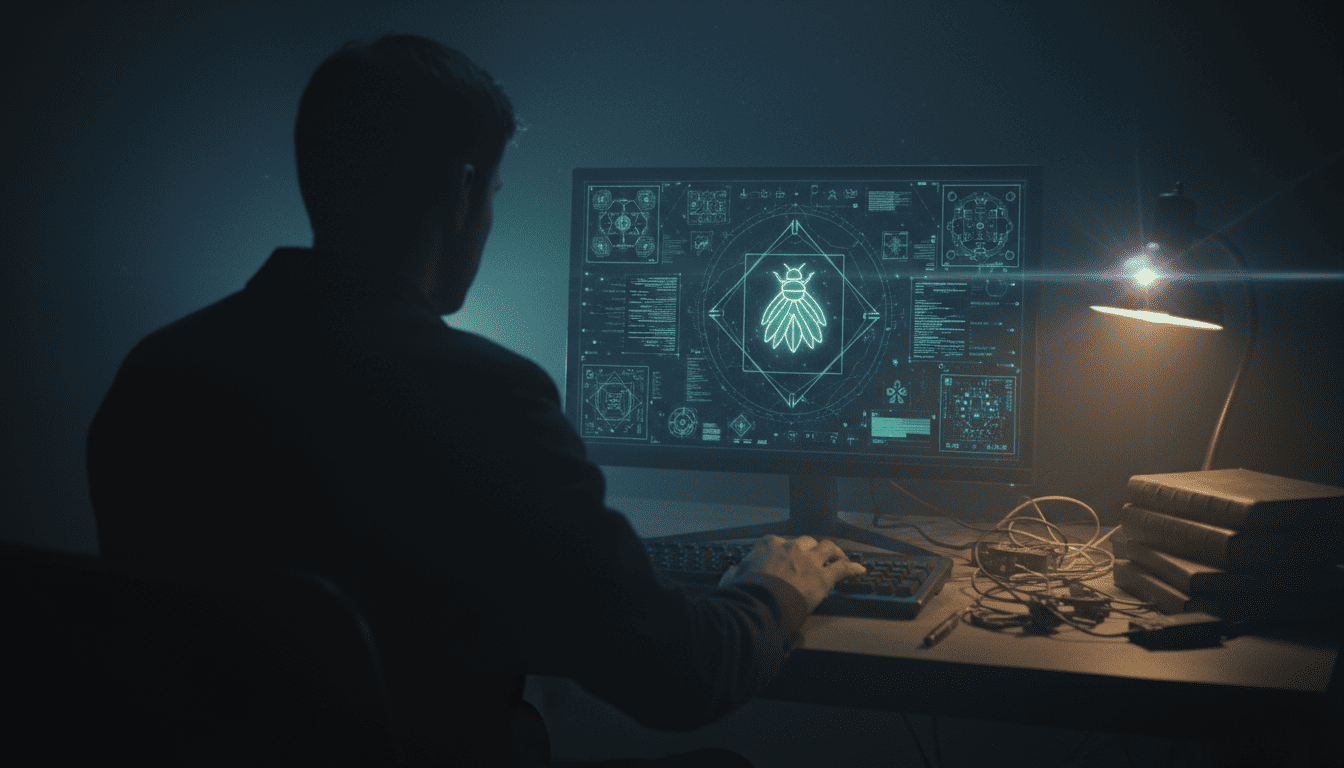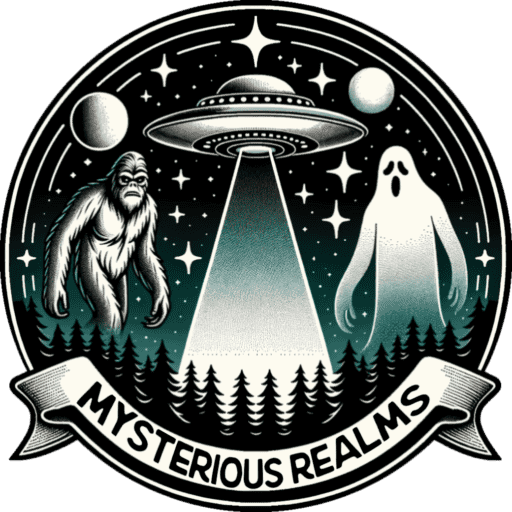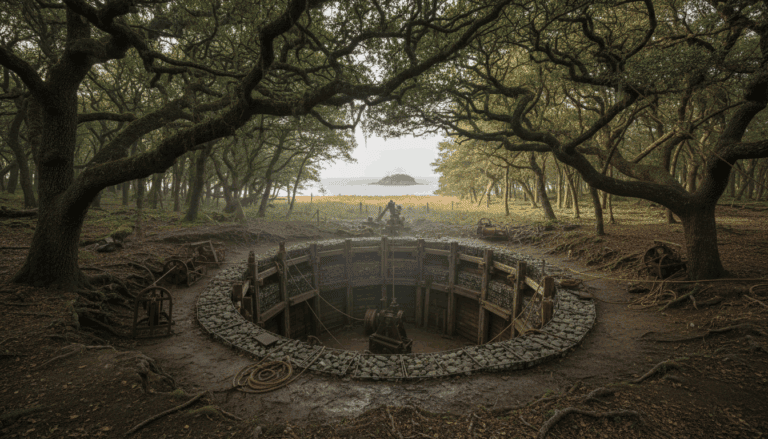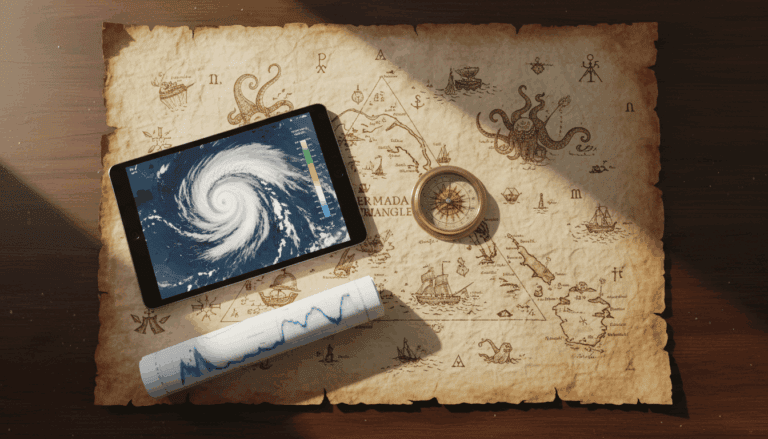Cicada 3301: The Internet’s Unsolved Mystery and the Quest for the World’s Brightest Minds
On January 4, 2012, a cryptic post on the internet forum 4chan launched one of the most elaborate and mysterious puzzles of the modern internet. This was the public’s first encounter with Cicada 3301, an unknown organization seeking to recruit “highly intelligent individuals” through a series of complex challenges. The puzzle was not a simple brain teaser, but a multi-layered test of cryptography, data security, and esoteric literature. This initial test set the stage for an annual tradition that captured the imagination of codebreakers and conspiracy theorists for years to come.
The challenges grew more difficult with each passing year, blurring the lines between the digital and physical worlds. The second puzzle from Cicada 3301, released in 2013, required knowledge of obscure occult writings and philosophy to decipher its clues. Participants were sent on a global scavenger hunt, with posters and QR codes appearing in cities from Warsaw to Seoul. Solving these puzzles demanded an interdisciplinary mind that blended advanced technical skill with a deep understanding of art, literature, and history, all while the group’s ultimate purpose remained a secret.
After two rounds of recruitment, the third puzzle, launched in January 2014, proved to be the most formidable. The 2014 puzzle remains publicly unsolved, marking an abrupt halt to the annual competition. The organization has since gone silent, except for a few PGP-signed messages warning followers against imposters and false claims. This sudden disappearance has only deepened the mystery, leaving a legacy of unanswered questions and a community of dedicated solvers still searching for answers.
Key Takeaways
-
Cicada 3301 was a mysterious organization that launched a series of complex puzzles from 2012 to 2014 to recruit “highly intelligent individuals.”
-
The challenges required a broad, interdisciplinary skill set, combining technical expertise in cryptography and data security with knowledge of obscure literature, philosophy, and art.
-
The puzzles uniquely blended the digital and physical worlds, leading participants from online forums to a global scavenger hunt for physical clues like posters and QR codes.
-
The first two puzzles in 2012 and 2013 were reportedly solved by a small number of people, whose fates remain unknown.
-
The third and most difficult puzzle, released in 2014, remains publicly unsolved to this day.
-
After 2014, the organization went silent, deepening the mystery surrounding its true identity, purpose, and whether it is still active.
The Internet’s Most Elusive Puzzle
A stark black image with white text appeared on the online forum 4chan on January 4, 2012, launching one of the internet’s enduring mysteries. This post was the public’s first encounter with a shadowy organization calling itself Cicada 3301. The message promised a path to enlightenment for the few who could solve its hidden meaning, explicitly stating a search for “highly intelligent individuals.” This single image began an elaborate global scavenger hunt to test the world’s brightest minds, immediately captivating codebreakers and puzzle enthusiasts.
The challenges were not simple digital riddles, demanding a vast and eclectic knowledge base. The puzzles wove together cryptography, data security, and steganography with references to esoteric literature, philosophy, and classical music. Clues were hidden in digital files and darknet sites but also in the real world, with posters appearing in cities like Warsaw, Paris, and Miami. This fusion of online and offline elements transformed the hunt into a tangible, globe-trotting adventure requiring immense resourcefulness and dedication.
The organization released two more puzzles in 2013 and 2014, each increasing in difficulty and deepening the enigma. While the first two were reportedly solved by small groups, the third puzzle from 2014 remains publicly unsolved. After this final challenge, Cicada 3301 went dark, issuing only a few verified messages to warn against imposters. The purpose of this recruitment, the fate of those chosen, and the organization’s identity remain a profound modern mystery.
A Message from the Shadows

The puzzle began on January 4, 2012, with a cryptic image posted to the random board of 4chan. Its stark white text on a black background announced a search for “highly intelligent individuals,” promising a hidden message for those clever enough to find it. The post immediately sparked activity among online communities dedicated to cryptography and digital forensics. Using basic steganography, codebreakers opened the image file in a text editor to find a string of text. This led them to a simple Caesar cipher: the first of many locks they would need to pick.
After cracking the initial cipher, solvers were led to a decoy image of a duck, a playful misdirection that tested their persistence. The real clue required a specific steganography tool, OutGuess, to extract a book code and a Reddit URL from the original 2012 image. This new path produced a phone number with a Texas area code, marking the puzzle’s first leap from the digital world. Callers were greeted by a recorded message providing coordinates for physical posters in 14 cities across the globe, turning the online mystery into a real-world scavenger hunt.
The First Challenge: 2012
The first puzzle began on January 4, 2012, when a simple image with white text on a black background appeared on 4chan. Users soon discovered a steganographic message hidden within the image’s data, a technique that conceals information within an ordinary file. This initial clue led to a series of increasingly complex cryptographic challenges, including Caesar ciphers and book codes tied to esoteric literary works (Source 1). Each solved puzzle was a key to the next, forming a digital breadcrumb trail designed to filter out all but the most dedicated participants.
As solvers progressed, the puzzle transitioned from the digital realm into the physical world, demanding more than just technical skill. The trail led to phone numbers with pre-recorded messages and GPS coordinates for locations across the globe, from the United States to Poland and Australia. In these locations, participants found posters with the cicada logo and a QR code, creating a global scavenger hunt (Source 1). This hybrid approach tested their cryptographic abilities and their willingness to engage with the challenge offline, leading a small number of individuals to the final solution.
A More Complex Challenge: 2013
The 2013 puzzle was considerably more complex, introducing a layer of esoteric philosophy that tested participants beyond their technical skills. This round required solvers to decipher a custom-made runic alphabet, which was central to decoding messages within a book titled “Liber Primus.” The puzzle’s creators also wove cryptographic clues into the obscure and controversial occult text, Aleister Crowley’s The Book of the Law (Source 2). This blend of ancient-looking symbols and modern esoteric literature showed Cicada 3301’s intent to find individuals with a broad intellectual curiosity. The challenge was no longer just about cracking code but about understanding the philosophical and historical contexts behind the codes.
Alongside the digital labyrinth, Cicada 3301 expanded its physical footprint with impressive global coordination. Physical posters with the iconic cicada image and a QR code appeared in cities across the world, from Warsaw and Paris to Seoul and Tokyo. This real-world scavenger hunt required participants to either travel or collaborate with others online near the poster locations. The logistics of such a widespread campaign hinted at an organization with significant resources and a dedicated global network, transforming the puzzle from a solitary endeavor into a collaborative international manhunt.
Conclusion
The Cicada 3301 phenomenon is a landmark internet-era mystery, blending the digital and physical worlds into a global scavenger hunt. From 2012 to 2014, these annual puzzles challenged the world’s brightest minds with complex cryptography, steganography, and esoteric literature. The stated goal was simple yet ambitious: to recruit “highly intelligent individuals” for an unknown purpose. While the first two puzzles were reportedly solved by a select few, the third and final challenge from 2014 remains an unsolved enigma. The organization’s sudden silence has only deepened the intrigue surrounding its identity and intentions.
The enduring legacy of Cicada 3301 lies not just in its unsolved ciphers but in the profound questions it leaves behind. Was this an elaborate recruitment drive for a security agency, a private think tank, or a group of brilliant minds seeking intellectual kinship? The group’s PGP-signed messages warning against imposters suggest a serious, organized effort, dispelling theories of it being a simple game. The fates of those who solved the puzzles remain unknown, their silence a crucial and haunting piece of the mystery.
The story of Cicada 3301 is a powerful reminder of the hidden layers of communication and intellect existing just beneath the surface of our daily online interactions. The unsolved 2014 puzzle still beckons to a new generation of sleuths, a dormant challenge waiting for the right mind to solve it. Whether it was a test, a recruitment tool, or something else entirely, its purpose remains one of the internet’s greatest unsolved riddles. The mystery forces us to wonder what they were building and if we will ever truly know.
Frequently Asked Questions
1. What is Cicada 3301?
Cicada 3301 is the name given to an enigmatic organization that posted a series of complex online puzzles starting in 2012. They presented themselves as a group seeking to recruit “highly intelligent individuals” through these elaborate challenges. The group’s true identity and ultimate purpose remain a complete mystery.
2. What was the purpose of the Cicada 3301 puzzles?
The puzzles were an elaborate recruitment tool designed to find and select exceptionally intelligent people from the public. The challenges acted as a filter, ensuring only those with a specific and diverse set of skills could progress. What the recruits would be used for has never been publicly revealed by the organization.
3. What kind of skills were needed to solve the puzzles?
Solving the puzzles required an incredibly broad, interdisciplinary skill set. Participants needed expertise in cryptography, data security, and steganography. A deep knowledge of obscure literature, philosophy, history, and art was also essential to decipher the many layers of clues.
4. How did the puzzles blend the digital and real worlds?
The challenges began online but quickly expanded into a global scavenger hunt, leading solvers to physical locations in cities from Warsaw to Seoul. At these locations, participants would find posters with QR codes that contained the next clue. This design blurred the line between online code-breaking and real-world investigation.
5. Were all the puzzles solved?
The first two puzzles, released in 2012 and 2013, were successfully solved by a select few individuals. However, the third and most formidable puzzle, which appeared in 2014, remains publicly unsolved to this day. This unsolved mystery marked an abrupt end to the annual challenges.
6. What happened to the people who solved the first two puzzles?
Those who solved the initial puzzles were reportedly invited to a private forum to work on projects for the organization. Their fate and the nature of their involvement with Cicada 3301 remain secret. The recruitment process was shrouded in the same mystery as the puzzles themselves.
7. Is Cicada 3301 still active?
Cicada 3301 has been publicly silent since the 2014 puzzle, with no new official challenges appearing. The only communications have been a few PGP-signed messages warning followers against imposters. The group’s current status and whether it will ever return remains one of the biggest unanswered questions.







